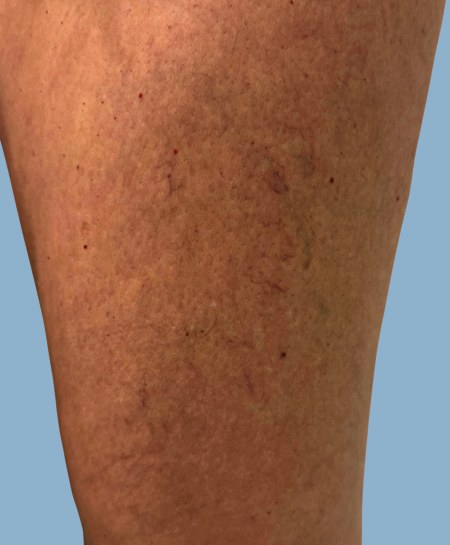Call me - +30 6944.237.080 - +30 210.86.20.001

Telengectasias
If you notice thin blue and red veins primarily appearing on your legs, you may have spider veins. These are common in both men and women. While heredity plays a significant role in their development, other factors contribute as well. Obesity, prolonged inactivity, hormonal changes in women, pregnancy, minor injuries, and excessive sun exposure can all lead to the formation of these small, abnormal blood vessels.
Spider veins are generally asymptomatic, though mild symptoms may sometimes occur.
Symptoms:
Symptoms can be, mild pain, often in the form of slight muscle cramping, particularly after prolonged standing or sitting, a burning sensation, heaviness in the legs, swelling (edema), skin discoloration (hyperpigmentation), itching in the affected area.
Although spider veins are primarily considered a cosmetic issue, they can also serve as an early warning sign of venous insufficiency in its initial stages, where spider veins may be the only visible symptom.
A thorough evaluation of the venous system by a vascular surgeon, including an ultrasound examination, provides a complete assessment and enables an individualized diagnosis, leading to a personalized treatment plan.
Treatment:
If venous insufficiency is present, it should always be treated first before addressing spider veins. The preferred treatment methods for venous insufficiency are laser or radiofrequency techniques, which offer effective results.
If no venous insufficiency is detected or if it has already been treated, the next step is to map and plan the treatment of spider veins using specialized medical tools.
The primary treatment for spider veins is sclerotherapy, which involves injecting a special medication into the affected veins. This procedure is safe and painless, and the number of sessions required depends on the severity of the condition and the individual’s response to treatment.
Laser therapy is sometimes mentioned as a treatment option for spider veins, but it is important to clarify that it is typically used as a complementary treatment, depending on the patient’s specific condition and needs. It is not the same as laser surgery performed for venous insufficiency.
Seeking treatment from a specialized vascular surgeon ensures the safest and most effective approach for managing spider veins.
